26 Things You Need to Know Before Buying a Carton of Eggs

There were some things I expected to be difficult to figure out as an adult. For example: which funds I should choose for my 401K and what to do when my car breaks down 200 miles from home. Figuring out which carton of eggs to buy was not one of them.
Yet, after a few of my first grocery store runs post-college, I started realizing I was clueless when it came to choosing a carton of eggs. Did the hurried shoppers around me really have it all figured out, or were they just as curious as me? Did they know why white eggs were cheaper than brown? Or if the “cage-free” brown eggs were better? And what the heck does “farm fresh” even mean?
Even if you have your go-to brand, there are some carton claims that we’d bet you might not know the meaning behind. So, if you’re curious to see what exactly omega-3-enriched eggs really are or why brown eggs always cost more (and if they’re better for you), we’ve compiled the ultimate guide to deciphering those eggcellent egg carton claims. Plus, we’ve added a few brands to look out for when you’re shopping.
Not a huge fan of eggs in the first place? Then you’ll want to peep this list of 26 Foods With More Protein Than an Egg.
And for more, don’t miss these 15 Classic American Desserts That Deserve a Comeback.
Benefits of eggs

Before we delve into the differences in types of eggs, we figured we’d briefly review the benefits that incorporating eggs into your daily diet can have on your overall health. For starters, eggs are the ultimate hunger squasher. Rich in both muscle-building protein and satiating healthy fats, studies have shown that people who eat eggs in the morning will consume less for the rest of the day. Plus, their amino acid profile maximizes building and preserving lean muscle mass, which can help your body burn fat. Eggs are also full of B-vitamins and choline, micronutrients which are important for brain development, muscle health, and energy levels.
Demystifying egg carton claims

Most egg cartons are plastered with descriptive terms, claims, phrases, and jargon. Some are meaningful, but many are misleading and hollow food buzzwords. Below, we’ve compiled a glossary of sorts for what these claims really mean. Given that there are a lot of conflicting interest groups and information out there about chickens and their eggs, we aren’t about to claim that this is your end-all-be-all guide to eggs; take this and all other egg information with a grain of, uh, chicken feed.
Conventional eggs

Before we demystify the claims on the cartons, you should know what’s behind standard production in the U.S. According to the most recent USDA 2015 statistics, 93% of all eggs purchased in America come from “conventional” caged systems known as “battery cages.”
In this scenario, hens are packed by the dozen into cages that give each bird less space than a single sheet of letter-sized paper (67 square inches) to stand. (However, the United Egg Producers, a national trade group, estimates that 15% of these hens can be squeezed into a space smaller than the standard size of a mouse pad.) Because the hens cannot display many of their natural behavior patterns in these cages, the welfare of caged hens is severely compromised.
However, welfare is separate from the nutritional profile of the eggs. And although the chickens are typically raised under stressful conditions, a 2011 Poultry Science study conducted over two years found that free-range eggs were not drastically all that nutritionally different from the eggs of hens kept in a cage. Some people believe they will be eating the stress hormones in eggs that come from stressed-out chickens, but there has been little scientific research showing that this should be a big concern for humans. The only clear difference the Poultry Science study found was that there are higher beta-carotene levels in range eggs, which contributes to their darker-colored yolks.
Cage-free
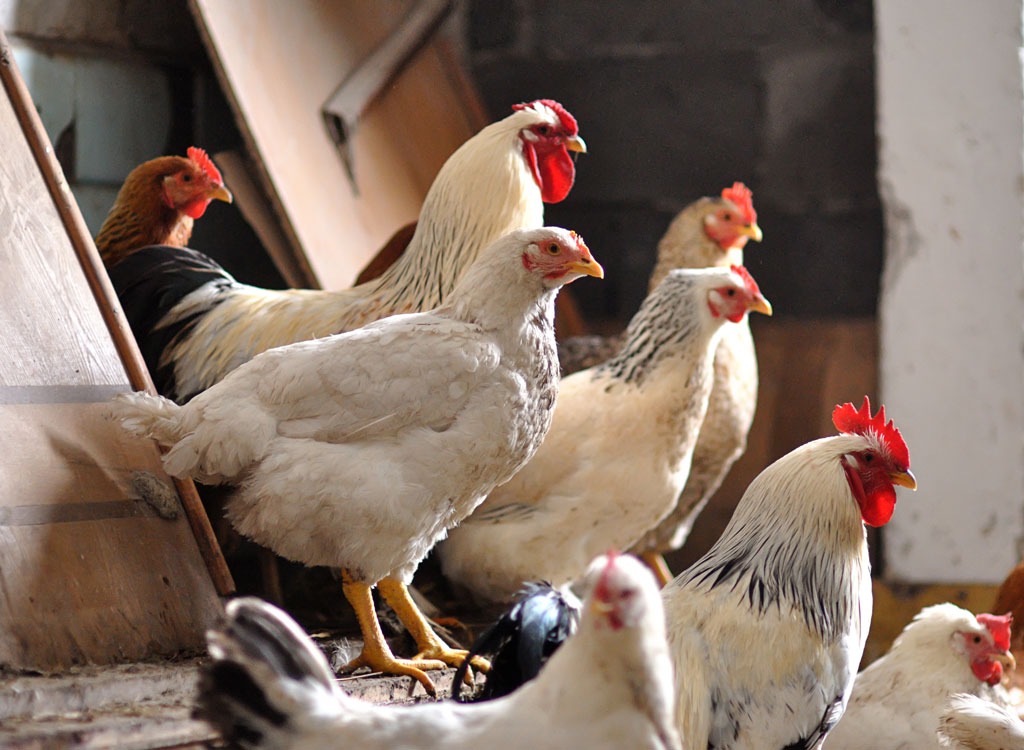
If you’ve been frequenting a grocery store over the past five years, there’s one thing you may have noticed: the plastering of “Cage Free” on egg cartons. Thanks to consumer awareness of the inhumane living conditions most chickens face, more companies are taking advantage of inscribing the claim “Cage Free” on their cartons. To do so, their hens are required to have a minimum of 120 square inches per bird (not even double conventional battery cages). Hens will still exclusively live indoors, either in large barns known as aviaries or crammed into bigger “enriched” or “furnished” cages that allow for some natural habits. If you’re concerned about animal welfare, check out our brand recommendations below to ensure your cage-free eggs are coming from cared-for hens.
Free range
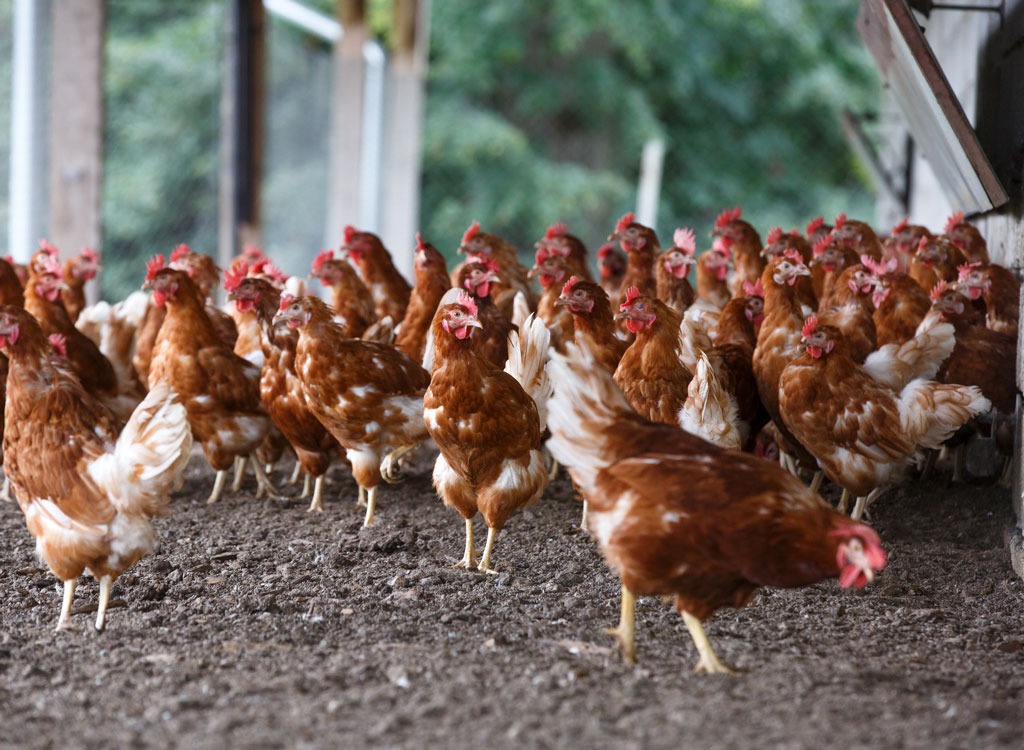
Free Range eggs are a step above cage-free in that these hens have the option to go outside; however, many hens do not wander outside their barns as doors are small, are only open for limited times, or don’t accommodate the entire flock. They are required to have at least two square feet of free-roaming outside pasture space, as stipulated by the HFAC Certified Humane standards, which allows them space to engage in natural behaviors like roosting, dust bathing, scratching, and other social interactions.
Pasture-raised
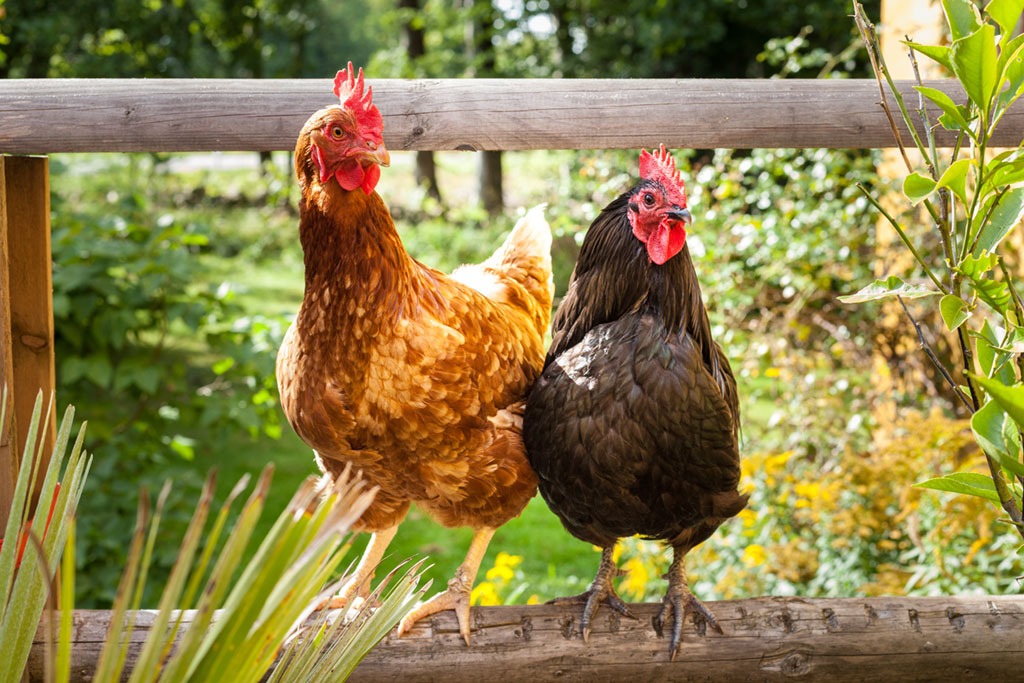
“Pasture-raised” hens enjoy a minimum of 108 square feet per bird to roam free. They can forage grass, go outside year-round (except in extreme weather conditions or under the threat of a predator), and are never given antibiotics. There’s a study from 2007 that was done by magazine Mother Nature News, that is often referenced because it found that the nutritional benefits of pasture-raised eggs versus traditional eggs include being lower in cholesterol and saturated fat and contain higher levels of vitamin A, omega-3 fatty acids, vitamin E, beta-carotene, and vitamins B9, C, and D. However, we haven’t seen any large, scientific studies in nearly the decade since then. So, keep in mind that the nutritional differences in your eggs may still be a gray area, no matter how the chicken was treated.
No hormones

This claim is mildly misleading because the FDA banned the use of hormones in all poultry production back in the 1950s. That means no chicken meat—nor eggs—on the market will ever contain hormones.
No antibiotics

Antibiotics are rarely used in the egg industry, but you can feel comfortable knowing that there are none administered to your hens.
Farm-fresh
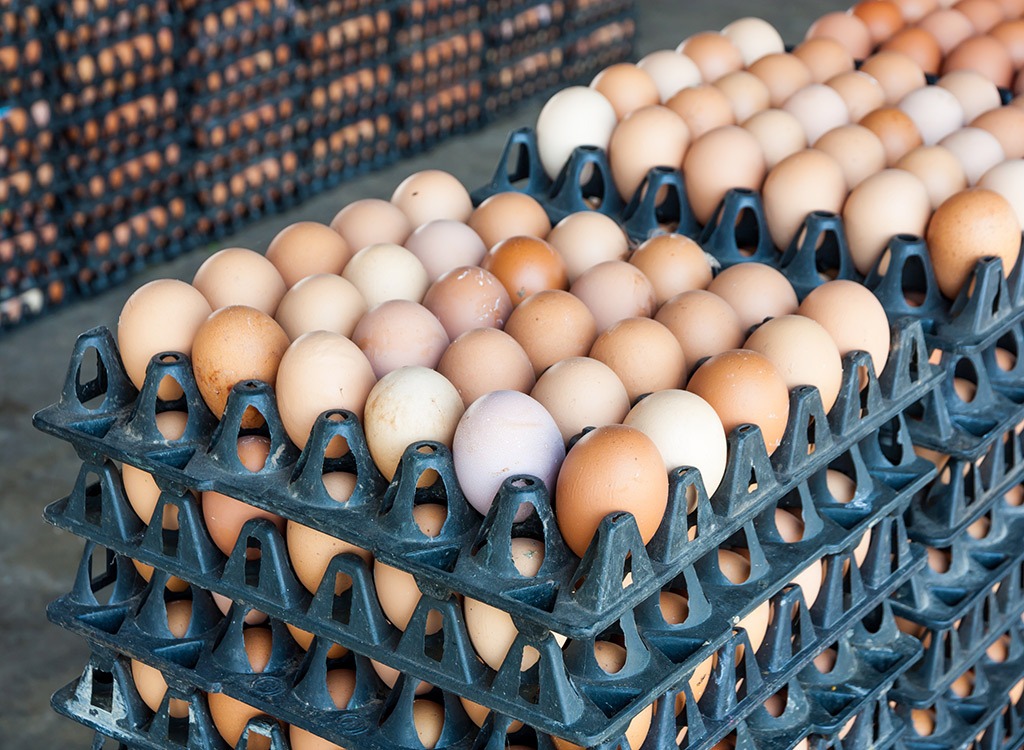
Although many brands attempt to get their eggs on store shelves within 72 hours of being laid, there is no regulation on the term “Farm Fresh.” Admit it: It’s probably meant to evoke images of overall-clad farmers and bucolic landscapes, no? A better indication of how fresh the egg is would be the grade. Grade A eggs allow for more air space in the egg, which indicates an older egg than Grade AA.
All-natural

As defined by the FDA, natural just means “that nothing artificial or synthetic (including all color additives regardless of source) has been included in, or has been added to, a food that would not normally be expected to be in that food.” So, basically, it has no real meaning—especially because 95% of eggs in the U.S. come from conventional chickens raised in pretty unnatural conditions (i.e. cages), according to the USDA. Besides natural not meaning what it sounds, check out these 30 Nutrition Myths—Busted.
Vegetarian-fed
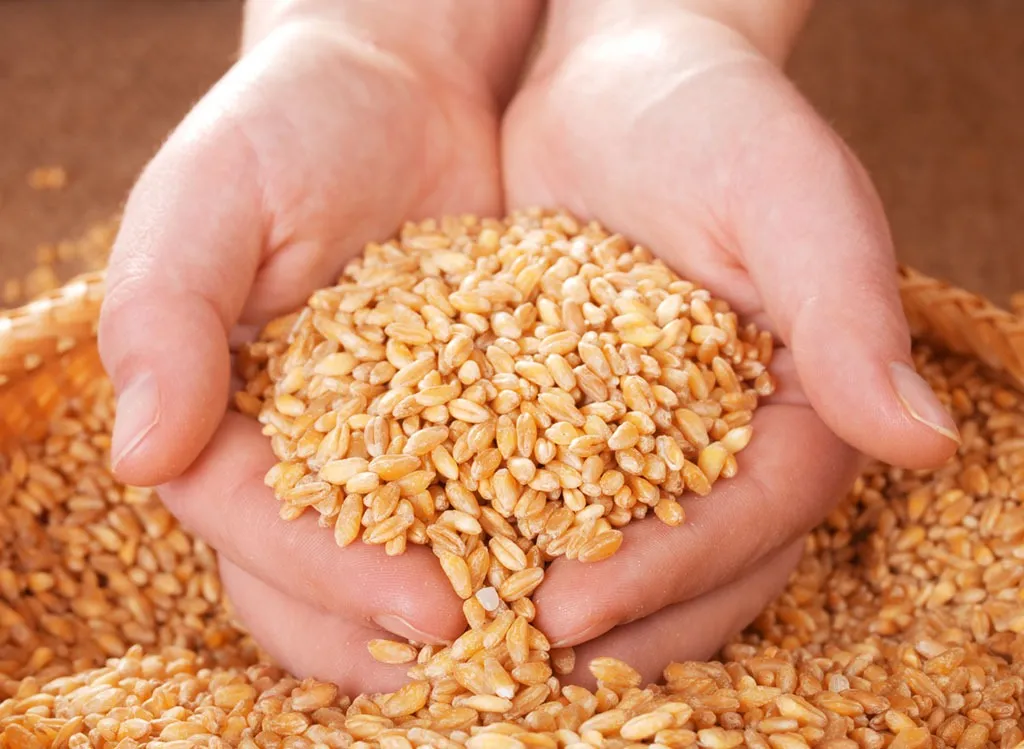
This claim is a bit odd considering chickens are omnivores. In the wild, they’ll eat a diet of omega-3-rich grasses and get their protein from insects, grasshoppers, and worms. Vegetarian-fed will mean that their grain feed contains no animal by-products (as protein) and will be supplemented with vegetarian-based protein sources such as soybeans.
Omega-3 enriched

Omega-3 enriched eggs are often given feed that has been supplemented with flax seeds and sometimes fish oil. Unfortunately, this term is not regulated, so there’s no way to really prove that the eggs you’re consuming will have significantly higher levels of omega-3s. You’re better off investing in your own ground flax, chia seeds, or wild fatty fish to ensure you’ll be receiving the most benefits of this anti-inflammatory fat.
Organic & Non-GMO

Organic certification is regulated by the USDA. It ensures the eggs are cage-free, not given antibiotics or hormones, fed an organic diet (one that does not involve artificial fertilizers or pesticides), and the hens are required to be able to access the outdoors. Unfortunately, the fact that one animal has the choice to go outdoors does not mean that all animals take the opportunity to be outside, according to an extensive 2010 report by the Cornucopia Institute, a national food and farm policy non-profit. Organic also means that no genetically modified organisms (GMOs) are used in the feed. The non-GMO certification is a separate designation assigned by a non-profit organization, The Non-GMO Project. The USDA Organic certification does not involve animal welfare guidelines, so if you’re concerned about those, check out the claim below.
Certified humane
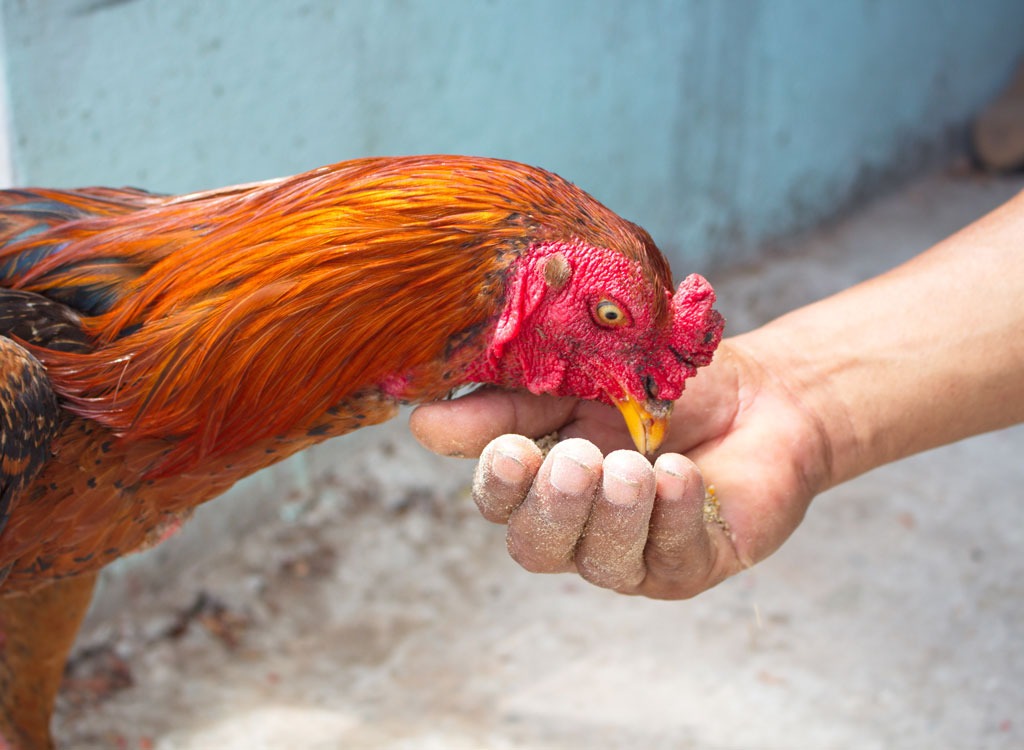
Certified Humane—a program of Humane Farm Animal Care (HFAC), a nonprofit organization whose mission is to improve animal welfare—assures customers that the producer’s hens will always have “ample space and shelter in clean, well-ventilated barns; gentle handling to limit stress; freedom to do what comes naturally, like roosting, scratching, and ‘dust bathing;’ ready access to safe-from-predators fenced in pasture; nutritious, high-quality feed free of antibiotics or hormones; and fresh, pure water whenever they want it.”
Sizes & Grades
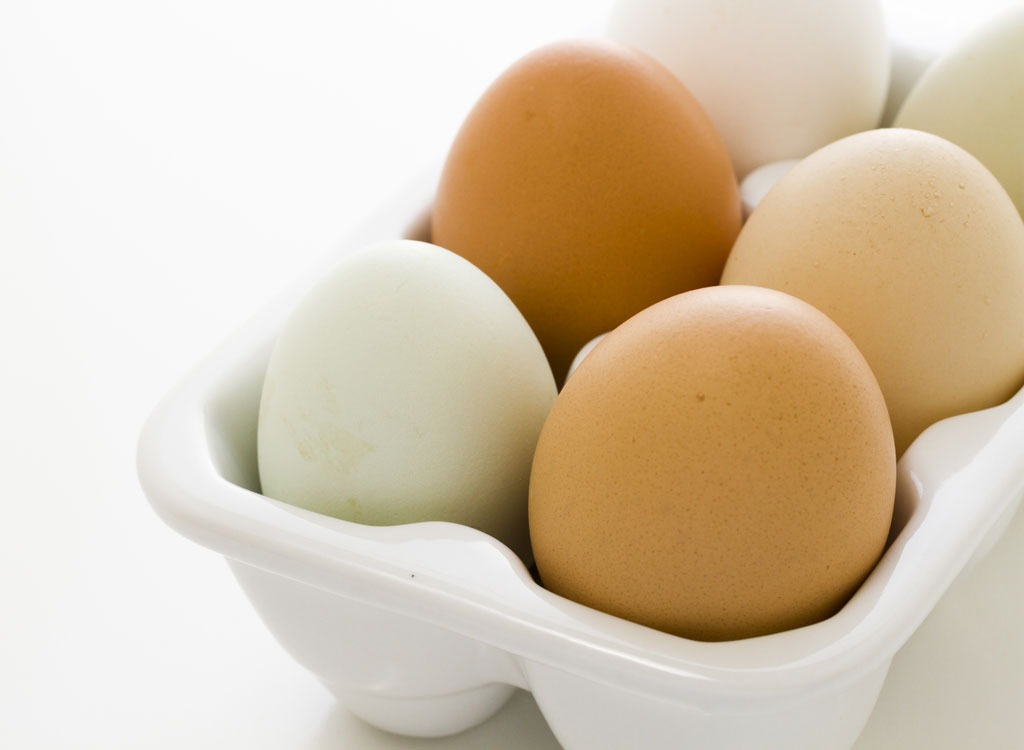
Eggs are sized and graded before they’re delivered to the supermarket. The USDA has specific guidelines for egg weights per dozen (as there will invariably be differences between individual eggs), which are listed below:
Small: 18 ounces (about 1.5 ounces per egg)
Medium: 21 ounces (about 1.75 ounces per egg)
Large: 24 ounces (about 2 ounces per egg)
Extra Large: 27 ounces (about 2.25 ounces per egg)
Jumbo: 30 ounces (about 2.5 ounces per egg)
Then, each egg is graded by using a high-intensity light to check the firmness and purity of the yolk as well as the density and size (i.e. if there are any air pockets) of the white. These grades only refer to the interior and exterior quality and do not reflect nutritional quality.
Grade AA: These are the finest quality eggs. The whites are thick and firm, the yolks are free from any defects, and the shells are pristine and without cracks. (Here’s a tip: purchase this grade for the best poached eggs.)
Grade A: Compared to AA, Grade A eggs also have clean whites but they may be less firm, the yolk is less protected by the albumen.
Grade B: These eggs are rarely ever sold in stores. These eggs have such a reduced quality—they have flat yolks, thin whites, and blood spots—that they will be used commercially in liquid and powdered egg products.
Eat This! Tip:
Even though most supermarket eggs are graded AA or A, that is not necessarily a reflection of their overall quality. Eggs from conventional, factory-farmed hens could theoretically be given the same A grade as a pasture-raised hen that consumes foraged insects and grass even though conventional eggs often have watery whites and loose yolks whereas pasture-raised eggs contain thick whites and rich orange yolks.
Does shell color matter?
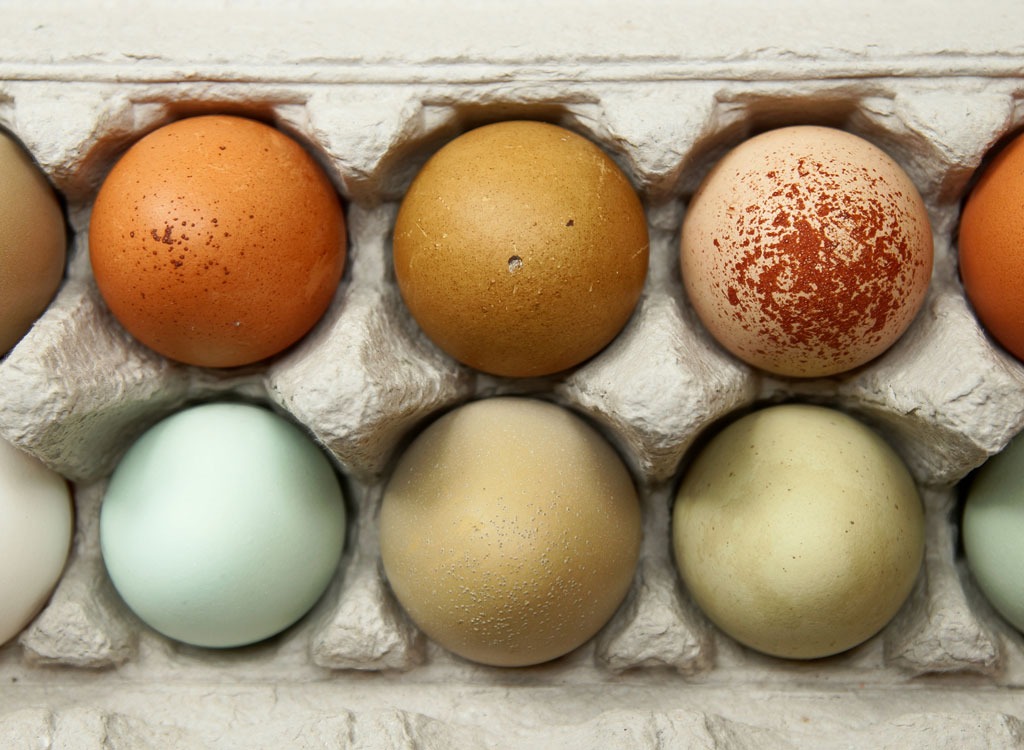
Finally, the answer to the question everyone thinks about when they pick up a carton of eggs at the store. The difference between brown, white, and blue eggs is…the shell’s color. Seriously, that’s it. The real reason eggs are different colors boils down to genetics. If a chicken is raised under the same conditions, there will be no difference in nutrition, taste, or baking stability in different colored eggshells. In particular, the color of the earlobes of chickens (yes, chickens have earlobes) will indicate shell color. Chickens with white earlobes generally lay white eggs, while chickens with red or brown earlobes lay brown eggs.
It’s also a misconception that brown eggs have thicker shells. The thickness of an egg solely depends on the age of the chicken: younger chickens lay eggs with harder shells and older chickens lay eggs with thinner shells, regardless of the breed.
White: This is the standard color egg you’ll find most commonly in grocery stores. Fun fact: All eggs start out white in their development.
Brown: Although brown eggs are typically more expensive compared to white eggs, it has nothing to do with their quality. These eggs usually cost more because the hens that lay them are physically bigger breeds than the chickens which lay white eggs. Bigger hens mean more food, which means farmers have to spend more on feed. And that increase in cost per egg gets passed onto consumers.
Blue: So you know about white and brown eggs, but what’s the deal with blue eggs? These are also from different breeds of chickens, and there’s an interesting story behind the origin of the blue color: A study published in the journal PLoS ONE found that over 500 years ago, an ancient virus in native South American chickens resulted in a genetic mutation that triggered an accumulation of a pigment known as biliverdin, which ultimately caused the chickens to produce blue and green eggs.
Eat This! Tip:
Choose whichever color egg you prefer; they’re basically all the same.
What about yolk color?

One day you crack open an egg and it’s a deep orange. The next, it’s a light yellow. What gives? Well, egg yolks will range in color based on what the hens ate. Because free-range hens can eat more pigmented, nutritious foods that range from insects to grasses, they will often have richer-colored yolks. On the other hand, the lighter yellow yolks will usually be from hens fed an all-grain diet.
As for the nutrients? The protein and fat will often remain the same regardless of yolk color, but there can be up to a 100-fold increase in micronutrient value of certain antioxidant carotenoids like lutein and beta-carotene in yolks fed a more nutrient-dense diet (like in pasture-raised hens), according to a 2010 study published in the Journal of the Science of Food and Agriculture. Rich, dark yolks will contain more of these potent antioxidants, which mop up harmful compounds that promote inflammation and fat storage. Other studies have also indicated that the same healthy diet that produces richer-colored yolks results in eggs with higher levels of heart-healthy omega-3s and less cholesterol.
Brands to try

Ok, so now you know what to look for when eggzamining the dairy aisle, but which brands are truly best? We did some digging and consulted The Cornucopia Institute’s (a national food and farm policy non-profit) 2016 Organic Egg Scorecard. Below, we’ve listed some of their top-ranked producers (those who scored a minimum “3-egg” rating or higher out of a possible 5, which means they are certified organic and comply with minimum USDA standards).
Pete and Gerry’s
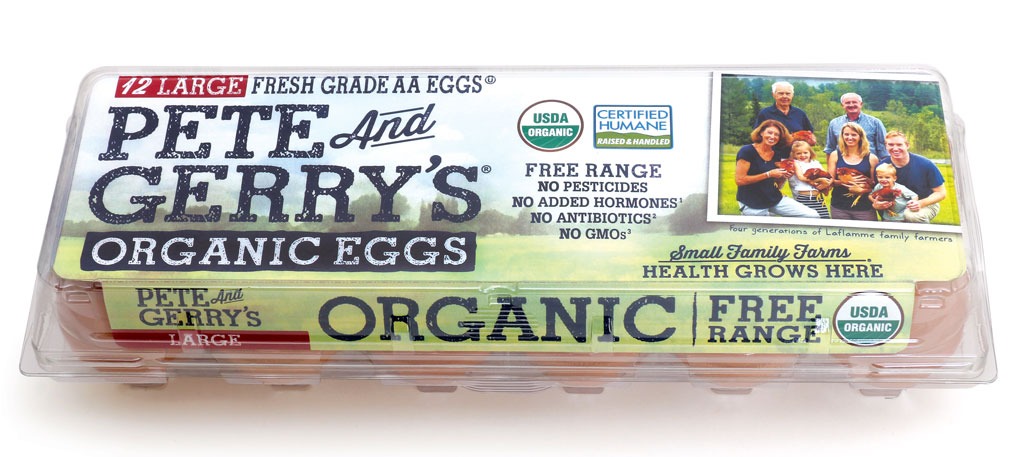
Region: Nationwide
This B-Corps-certified egg company was the first to be certified humane and is one of the largest and fastest-growing free-range organic producers in the country. Pete and Gerry’s Organic Eggs is a New Hampshire-based brand that’s been in business since the late 1800s and now sources its eggs from 125 independent, small family farms throughout 13 states. Despite its large distribution area and high demands, the company remains committed to furthering its mission of increasing both indoor and outdoor access for its birds.
Vital Farms
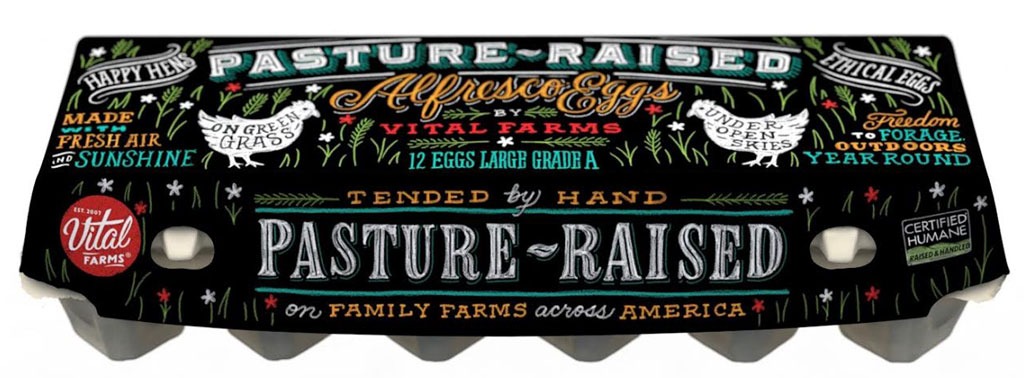
Region: Nationwide
Allow us to introduce you to the farm which created the pasture-raised egg category: Vital Farms. After starting their Austin, Texas farm in 2007, Vital Farms has grown to become the largest national producer of pasture-raised eggs in the U.S. All pastures from 90 independent family farms are managed organically and allow at least 108 square feet of pasture per bird.
Nature’s Yoke
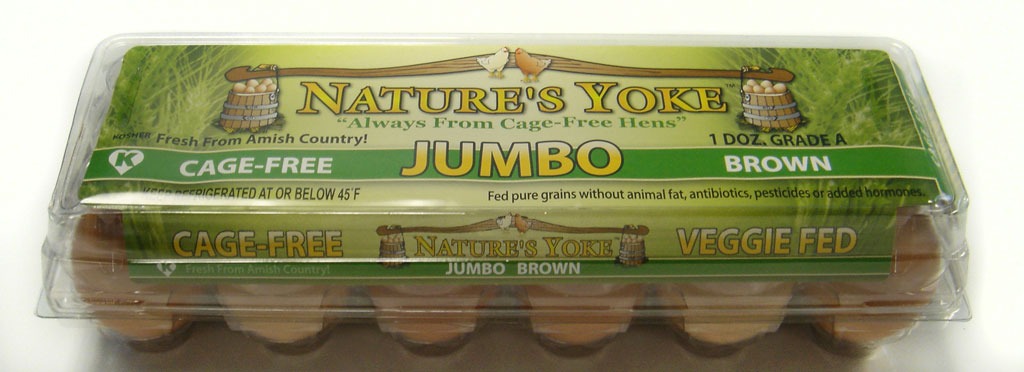
Region: Northeast
The company—which gathers eggs from a variety of small, Pennsylvania family farms—offers a range of eggs including organic, pastured, cage-free, and omega-3-enriched eggs. All hens are housed in large barns where they are provided with space to roam as they please and are given full range to peck and scratch as they instinctively do. Their chickens are raised and handled in accordance with Certified Humane standards, their feed contains no animal by-products, and they never inject their flocks with hormones or antibiotics.
Shenandoah Valley Family Farms
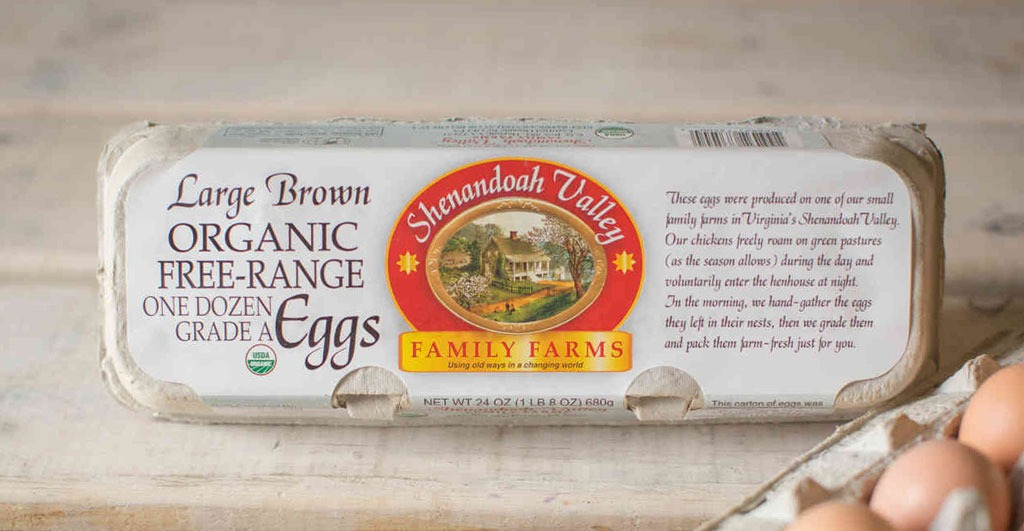
Region: Whole Foods Markets mid-Atlantic region
Shenandoah Valley Family Farms, located in Virginia’s Shenandoah Valley, obtained top marks from the Cornucopia Institute for providing ample outdoor space, having hens that are truly pastured, and making an effort to encourage their hens to go outside. Check out your carton to find the name, address, and phone number of the small farm where your eggs originated.
Blue Sky Family Farms

Region: Midwest, Northeast, Mid-Atlantic
Egg Innovations, headquartered in Port Washington, Wisconsin, oversees the production of free-range and pasture-raised organic, non-GMO, and conventionally-fed eggs under the Blue Sky Family Farms brand. Egg Innovations ensures that all of their partner farmers have barn plans, animal husbandry training, and general support. The production is Certified Humane by third parties, and the hens are free to roam inside and out enjoying green grass, sunshine, and fresh air as good weather permits.
The Happy Egg Co.

Region: Nationwide
The Happy Egg Company is made up of 11 farms located across the Ozark Woodlands of Arkansas and Missouri, a region that provides a temperate environment for the hens to roam freely year-round. The Woodlands is also closer to the grain fields where the farmers source their feed ingredients. The company offers both free-range eggs and organic eggs from hens fed a vegetarian feed to supplement their pasture-foraged diet.
Farmers Hen House
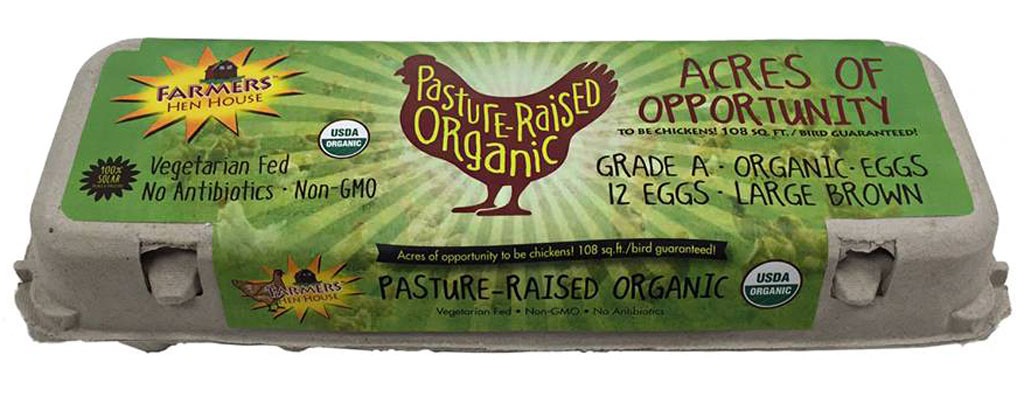
Region: Nationwide
Farmers Hen House is a family-owned business that started in 2000 in Kalona, Iowa. The Miller family manages small, family farms—mostly owned by Amish and Mennonite farmers—that are located within 30 miles of their processing facility. These pasture-raised organic eggs are allowed free-range, are never confined to cages, and roam grassy pens with plenty of room to be chickens when outside. All farms which contribute eggs to Farmers Hen House are on track with the USDA organic certification program and the Certified Humane program.
Stiebrs

Region: Pacific Northwest
Stiebrs Farms was founded in 1953 in Yelm, Washington. To ensure their feed is entirely organic, the Stiebr family owns and operates their own certified-organic, vegetarian feed mill. All of their cage-free and organic eggs are Certified Humane by Humane Farm Animal Care. Hens are raised either in large cage-free henhouses, or their pasture-raised hens spend time outdoors in pastures.
Larry Schultz Organic Farm
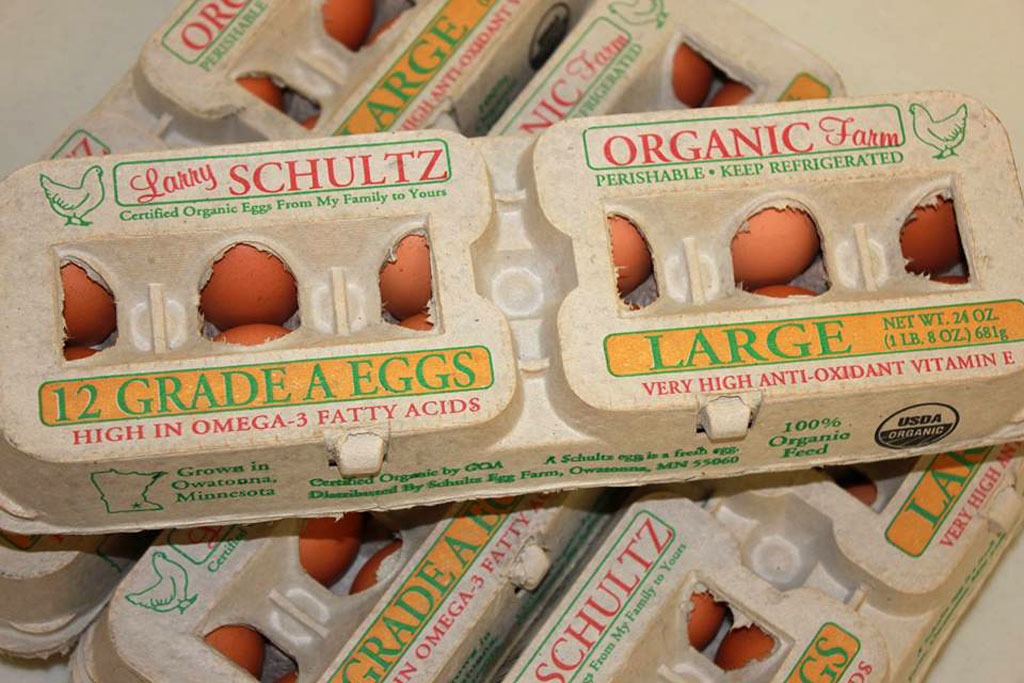
Region: Midwest
Located in Owatonna, Minnesota is Larry Schultz’s Organic Farm. Hens are raised cage-free, are free to eat and exercise within an airy sunlit barn, or permitted to roam outdoors in grassy fence-free fields, weather-permitting. Altogether, Schultz chickens live in a stress-free environment that allows the flock to develop into healthy, happy birds.
Alderfer Eggs
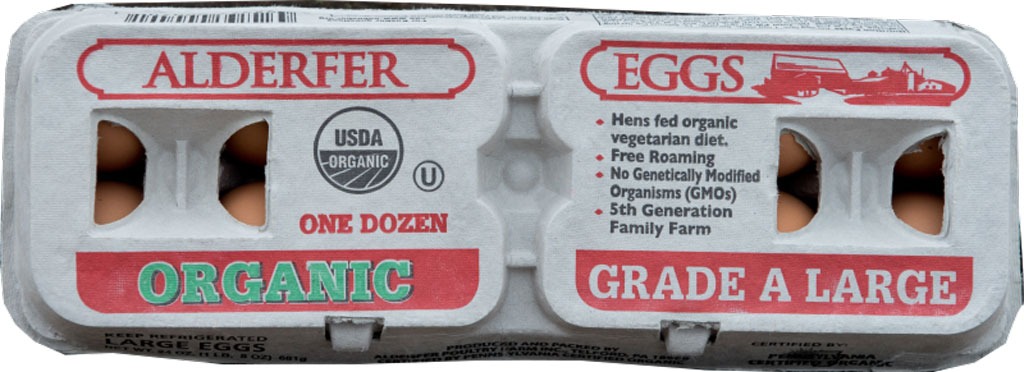
Region: East Coast
Alderfer Poultry Farm is an entirely cage-free, organic farm located in the rolling hills of southeastern Pennsylvania. Their Certified Humane, pasture-raised, and organic eggs can mostly be found in Maryland, Washington D.C., and Pittsburgh.
For more, check out these 108 most popular sodas ranked by how toxic they are.








